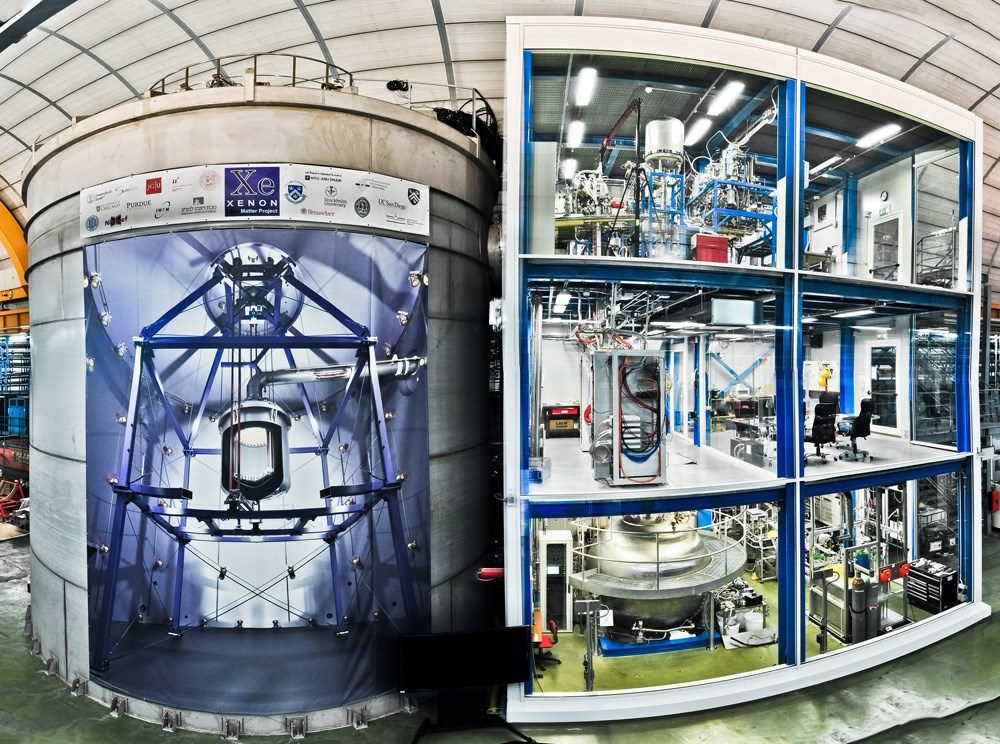XENON1T is an experiment created to detect dark matter and hypothetical particles. Recently registered unexplainable events.
Source: Quantamagazine
The physicists who run the world’s most sensitive experimental search for dark matter have seen something strange. They have uncovered an unexpected excess of events inside their detector that could fit the profile of a hypothetical dark matter particle called an axion. Alternately, the data could be explained by novel properties of neutrinos.
More mundanely, the signal could come from contamination inside the experiment.
“Despite being excited about this excess, we should be very patient,” said Luca Grandi, a physicist at the University of Chicago and one of the leaders of the 163-person experiment, which is called XENON1T. The experiment’s successor will be needed to rule out possible contamination from tritium atoms, Grandi said. That experiment is expected to begin later this year.
Particle physicists have searched that long for a more complete inventory of nature, beyond the set of particles and forces known as the Standard Model of particle physics. And for 20 years, experiments like XENON1T have hunted specifically for the unknown particles that comprise dark matter, the invisible stuff that throws its gravitational weight around throughout the universe.
What is known about dark matter?
It is a different matter from what we know, whose formation is by protons, electrons, and neutrons. According to the majority of scientists, compose 85% of all matter in the Universe. According to calculations, normal matter by itself couldn’t keep the galaxies united. There is some extra matter which doesn’t absorb or reflect light but exerts gravitational force over common matter.

The result described in the paper is a pileup of events called “electronic recoils” inside the XENON1T detector. A sensor-lined tank of 3.2 metric tons of pure xenon, the detector is located thousands of feet beneath Gran Sasso, a mountain in Italy. As a chemically inert, “noble” element, xenon makes for a quiet gazing pool in which to look for the ripples of unknown particles, should any flit through.
The XENON series of experiments were originally designed to seek heavy hypothetical dark matter particles called weakly interacting massive particles, or WIMPs. Any WIMPs traversing the detector should occasionally collide with a xenon nucleus, generating a flash of light.
As the WIMP search kept coming up empty, XENON scientists realized several years ago that they could use their experiment to search for other kinds of unknown particles that might pass through the detector: particles that bang into an electron rather than a xenon nucleus.
They used to treat these “electronic recoils” as background noise, and indeed many of these events are caused by mundane sources such as radioactive lead and krypton isotopes. But after making improvements to dramatically reduce their background contaminations over the years, the researchers found that they could look for signals in the low-level noise.
In their new analysis, the physicists examined electronic recoils in the first year’s worth of XENON1T data. They expected to see roughly 232 of these recoils, caused by known sources of background contamination. But the experiment saw 285 — a surplus of 53 that signifies an unaccounted-for source.
Another possibility can be neutrinos, which aren’t dark matter. Maybe dark matter and energy don’t exist and there is some gravitational phenomenon still not understood.
The XENON1T experiment







